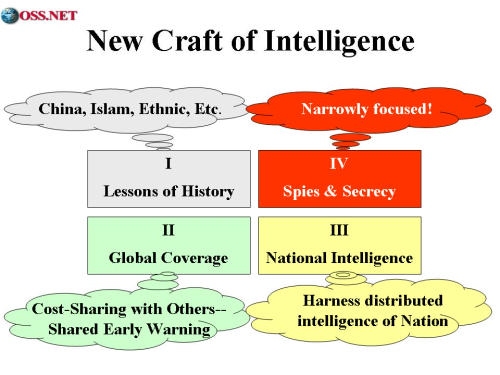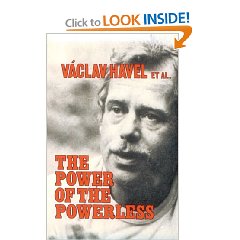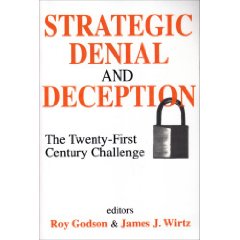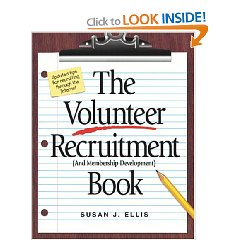Review: Congressional Caucuses in National Policymaking
4 Star, Congress (Failure, Reform)The author's bottom line, based on original research and a fine overview of national, regional, state/district, industry, party, and personal interest caucuses, is that they provide a very substantial *complement* to the formal committee process, and thus render an invaluable service to Members.
Caucuses, in the author's investigative report, exist primarily to help Members deal with complex issues that are either multi-jurisdictional in nature, not covered adequately by existing Committee assignments, or lacking in political support or attention for various reasons–the High Altitude Caucus, to keep environmental regulations designed for sea-level from being too silly at high altitudes, is a good example of the latter.
Caucuses are primarily information collection and sharing vehicles, followed by agenda and policy setting tools. They serve as valuable forums for orienting new Members or helping Members across various Committee jurisdictions focus on shared concerns.
The book finds that caucuses are perceived as policy actors, both within the legislative process and within the Administration. In the 100th Congress, the focal point for the book, most caucuses were focused on economic issues, especially trade. About a quarter focused on defense and foreign policy including international trade and immigration issues. Roughly 20% worked trade issues, 17% defense issues, and 13% immigration, human rights, and terrorism issues.
At the time of the book's writing there were no caucuses on national information strategy or information technology applications relevant to improving government operations at the federal level, or between the federal and state/local levels.
Administratively, in the past caucuses could be recognized as legislative service agencies and given official funding and floor space. These privileges were eliminated in the mid-1990's due to leadership concerns over accountability and propriety. Some converted to non-profit status, others to a new form of caucus, the congressional member organization. In the aftermath of the 104th Congress elimination of the older form of caucus, most have staffs that are very small, 1-2 at most, and tend to be managed by the leading Member.
This is a fine book and a good first start for what could be a new literature on new forms of democratic representation enabled by the Internet. There is no reason why the emerging trends in cyber-advocacy and digital democracy at described so well by the Foundation on Public Affairs might not eventually be integrated into a larger digital caucus environment in which Members can matrix various grassroots civic offerings, industry information, and caucus-based filtering and analytic services, to get in closer touch with real-world information that is not filtered by the Administration or the constrained by the limitations of the Congressional Research Service, which does the best it can with excruciatingly limited resources. I hope the author goes on to write this second book as her first is a valuable and helpful offering to policy-makers, citizen advocates, and students of the emerging new democratic processes made possible by the Internet.

Review: The Power of the Powerless–Citizens Against the State in Central-Eastern Europe
7 Star Top 1%, Civil Society, Consciousness & Social IQ, DemocracyLiving within the truth is the ultimate act of citizenship, and such living, even in the face of totalitarian repression (as in Czechoslovakia) or consumerist subversion and corporate corruption of the political and financial systems (as in the USA) can ultimately empower the powerless.This is an *extraordinary* book that is directly relevant to the circumstances that we now find ourselves in–what Ralph Nader calls “corporate socialism,” where the nominal owners of both the federal government (the voters) and the corporations (the stockholders) find themselves disenfranchised, abused, shut out, and their life savings looted by the most senior chief executive officers and politicians.
The book is slightly mis-represented, with “et al” in small print after Havel's name as the author. I was even tempted to skip the additional small essays (his leading essay constitutes 44% of the total book, with ten other essays each being roughly 6% of the book) but that would have been unwise. There is real value in the other essays.
Both Eastern Europe prior to the revolution, and the USA in particular but Western democracies in general, share a common overwhelming problem, that of the silenced majority. As both Havel here and Nader elsewhere observe, the word “progressive” is contaminated and diluted, while democracy and capitalism (or socialism) in the ideal are completely compromised by a combination of asymmetric information (keeping the people uninformed) and corporate or bureaucratic or political corruption.
Havel opens by noting that “the system has become so ossified politically that there is practically no way for …nonconformity to be implemented within its official structures.” This forces the vast majority of the public to “live within a lie,” and accept, either consciously or unwittingly, the huge chasm between political freedom and economic fairness in the ideal, and what the totalitarian or hijacked capitalism models offer in reality.
Brutally stated, from the point of view of the normal wage earner, there is no difference between totalitarianism and corrupt capitalism. In page after page, Havel, poet and president, documents this truth.
Speaking specifically of the West, Havel notes that Western leaders, “despite the immense power they possess through the centralized structure of power, are often no more than blind executors of the system's own internal laws–laws they themselves never can, and never do, reflect upon.” Who does that remind us of? Clue: it makes no difference which party is in power. Havel specifically relates the Czech and Eastern European experience to the West, “as a kind of warning to the West, revealing its own latent tendencies…”
Havel places most of his emphasis on reform at the individual and community level, outside of politics and economics. He is especially encouraging in speaking of how unlikely it is to predict the moment when widely differing groups can come together in truth and freedom to overcome an oppressive regime, and yet how likely it is, in today's environment, that such a change might occur.
In many ways his long essay reminded me of George Will's collection of thoughts published as “Statecraft as Soulcraft,” except that Havel has found the state (either communist or capitalist) to be a failure at its most important function–the people must instead constitute an alternative polis that is initially side-by-side with the state, and ultimately displaces the state with a fresh new start. Incumbents beware, Havel finds that more often than not a clean sheet fresh start is the way to go.
As the USA confronts terrorism and a right-of-center approach to law enforcement, Havel offers a clear warning to citizens at risk of being labeled as terrorists when in fact they are only dissidents and speakers of truth. He speaks of the communist regime “ascribing terrorist aims to the ‘dissident movements' and accusing them of illegal and conspiratorial methods.” Shades of the present in the West, where anti-globalization activists and legitimate Arab and Muslim personalities have been tarred with the terrorist brush, held without recourse to lawyers, and generally abused in the name of an ill-defined and badly-managed counter-terrorism program.
Among his deepest thoughts, and I will stop here for the essay needs to be read by the same thoughtful people that are reading “Cicero” and “What Kind of Nation” and “Crashing the Party” and “The Best Democracy Money Can Buy”, is the following: “The ‘dissident movements' do not shy away from the idea of violent political overthrow because the idea seems too radical, but on the contrary, because it does not seem radical enough. For them, the problem lies far too deep to be settled through mere systemic changes, either governmental or technological.” Havel, perhaps in concurrence with Lawrence Lessig and his “Future of Ideas” finds both the law and the legal code to be oppressive and abusive of the people–the recent effort to modify bankruptcy laws to reduce the protections of the people from abusive credit card companies, are but one small example–the outrageous extension of copyright and patent laws to keep innovation from the marketplace are another.
Havel anticipates the “whithering away and dying off” of traditional political parties, “to be replaced by new structures that have evolved from ‘below' and are put together in a fundamentally different way.” He speaks briefly of technology being out of control, and of the ultimate war now taking place, between state control and social control. He concludes that parliamentary democracies are essentially institutionalized forms of collective *irresponsibility*, and that only a moral reconstitution of society, the resurrection of core “values like as trust, openness, responsibility, solidarity, love” will show the way out of the “classic impotence of traditional democratic organizations.”
The other authors are not to be missed, and provide complementary but distinct views that are helpful to sparking debate and reflection. This volume will in my opinion stand as one of the great basic texts for political science and public administration, and it has great value for courses and reflections on ethics, citizenship, sociology, and economics.

Review: Strategic Denial and Deception–The Twenty-First Century Challenge
5 Star, Censorship & Denial of Access, Intelligence (Government/Secret), Misinformation & Propaganda, StrategyWhile there are some similarities among a few of the contributions, on balance each one is sufficiently unique. Two key thoughts that jumped out:
1) Most of the lessons learned come from World War II. The authors were hard-pressed to find modern examples. The one used from the Gulf War (an amphibious feint) is in my recollection false–we were planning an amphibious attack, and it was only at the last minute that CINCCENT was persuaded to do a Hail Mary end run, prompted in part by some exceptional work from the Navy's intelligence center that showed the beach obstacles in great detail.
2) Two perennial lessons learned are that policy makers do not want to hear about possible hostile denial and deception–they want to stick with their own preconceptions (which of course make denial and deception easier to accomplish against us); and second, that intelligence experts tend to be under great pressure to cook the books in favor of policy preconceptions, while also being generally unwilling to believe the enemy can deceive them or accomplish slights of hand that are undetectable.
All of the chapters are good, but two struck me as especially helpful today: J. Bowyer Bell's “Conditions Making for Success and Failure of Denial and Deception: Nonstate and Illicit Actors,” and Bart Whaley & Jeffrey Busby, “Detecting Deception: Practice, Practitioners, and Theory.” The latter, building on a lifetime of study that included a review of eight strategic cultures as well as the cost of major deceptions (D-Day deceptions that fixed German forces cost less than 1% of the assets and could have saved the entire force), examined 47 seven different kind of “detectives” from scientists and bank tellers to biographers and private eyes, and creates nine categories of “detectibles”, concluding with the Law of Multiple Sensors, something that most stove-piped intelligence communities simply will not grasp for at least another decade.
This is both a serious work of scholarship, and a very valuable policy reader.

Review: Dirty Tricks or Trump Cards–U.S. Covert Action and Counterintelligence
5 Star, Intelligence (Government/Secret)While 9-11 demonstrated our incapacity in both these vital areas that comprise the black art side of national power, there is no other book and no other expert that has done more to itemize the details that must be contemplated (and are not now being contemplated) by those responsible for devising homeland security defenses. The author's appreciation for pre-emptive “offensive” counterintelligence and covert action, and his understanding of terrorist and criminal and other nonstate actors (one should include rogue corporations, of which there are many), make him particularly well-qualified to advise the Administration and Congress as we move toward what must be a draconian reconstitution and revitalization of national intelligence.

Review: The Volunteer Recruitment (and Membership Development) Book
4 Star, Best Practices in Management, Civil SocietyThere are a few flakey notes (e.g. one vignette about recruiting people to call parents and offer support as they are getting kids out the door to school. Any normal parent, especially if one parent is absent or has an early work start, would be furious at any volunteer daring to call in the midst of the chaos that charactizes getting three kids out the door to three different bus pick-up times.)
This manual does have an index. Bottom line: dated, some nuggets, if volunteers are vital to your success, worth getting.

2002 OSINT 101: Basic Training in Open Source Intelligence (OSINT)
Methods & Process|
2002 |
SE |
Training | Bjore | OSINT 101: Sense-Making |
|
2002 |
US |
Training | Black | OSINT 101: Desktop Tools for Smart People |
|
2002 |
US |
Training | Chester | OSINT 101: NATO Lessons Learned |
|
2002 |
US |
Training | Henk | OSINT 101 Respecting the Cultural Dimension: Intelligence and Africa |
|
2002 |
US |
Training | Hock | OSINT 101: Overview of the World of Information |
|
2002 |
US |
Training | Hohhof | OSINT 101: Competitive Intelligence Analysis Tools & Web-Sites |
|
2002 |
US |
Training | Klavans & Ashton | OSINT 101: Technology Mapping with Open Sources of Information |
|
2002 |
US |
Training | Lee | OSINT 101: Geospatial Information Sources |
|
2002 |
US |
Training | Manwaring | OSINT 101: Intelligence & Asymmetric Warfare |
|
2002 |
US |
Training | Marshall | PSINT 101: OSINT and Global Hotspots |
|
2002 |
US |
Training | Moore & Krizan | OSINT 101: Core Analytic Competencies |
|
2002 |
US |
Training | Smith | OSINT 101: Internet and Commercial Online Exploitation |







